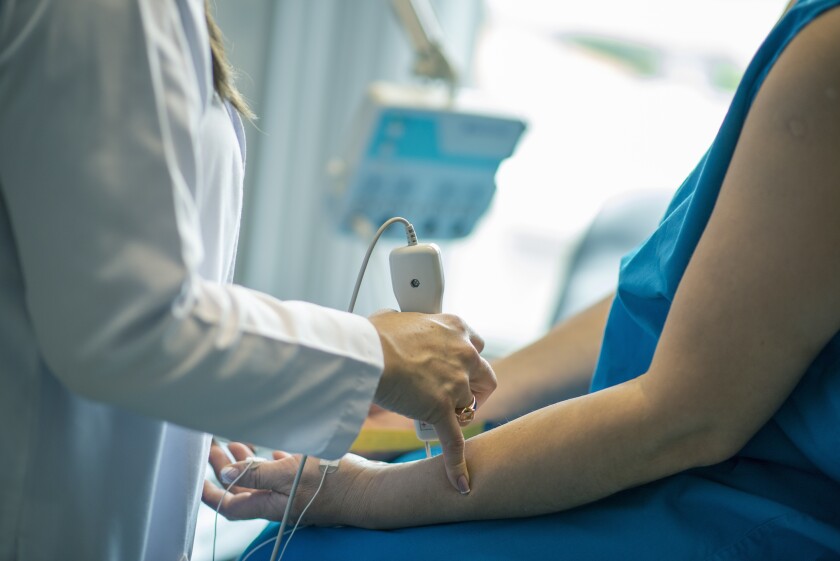Personalised medicine, which is generally considered analogous to precision medicine, is built on companion diagnostics. A companion diagnostic is a medical device, often an in vitro diagnostic (IVD), that has been primarily used to identify subgroups of patients, including:
Those who are most likely to benefit from a particular therapeutic product; and
Those who are likely to be at increased risk of serious side effects as a result of treatment with a particular therapeutic product.
Over the past few years, personalised medicine has received a lot of attention. There has been an increasing number of personalised medicine products authorised in various countries, with recommendations or requirements regarding subgroups of patients. Against this backdrop, patenting personalised medicine or inventions related to companion diagnostics has become a new strategic focus of patentees’ patent portfolio construction and part of their ‘evergreening’ strategy.
In drafting a Chinese patent application for an invention related to personalised medicine or companion diagnostics, patentees need to tread carefully so as to avoid the ineligibility pitfall and to guarantee that the granted patent has a reasonable protection scope.
Avoiding the ineligibility pitfall
Article 25.1(3) of the Chinese Patent Law explicitly provides that “methods for the diagnosis or for the treatment of diseases” are not patentable. However, drugs, medical devices, and diagnostic kits are patentable subject matter in China. Second medical use claims, which protect the repurposing of a known drug, are also patentable in China. Such claims may be drafted as Swiss-type claims, which read “Use of substance X in the manufacture of a medicament for the treatment of disease Y”.
Accordingly, a substance for detecting a particular biomarker that is initially used in the diagnosis of a certain disease can use the drafting approach adopted in a second medical use claim in China. Applicants could patent the discovery of a correlation between a biomarker and a disease in the following manner: “Use of a biomarker X detection reagent in the manufacture of a reagent/kit for the diagnosis of disease Y”. However, in China, in vitro diagnosis cannot be granted as method claims, which are often drafted as “a method of predicting…”, even though the test for the diagnosis is performed on in vitro samples.
Claim construction
Personalised medicine often involves collaboration between the pharmaceutical industry and the in vitro diagnostic industry, with the latter providing information that is essential for the safe and effective use of a drug or biological product manufactured by the former.
Applicants are therefore recommended to draft at least two sets of claims, targeting separately the manufacture of a medicament for treatment and the manufacture of a diagnostic kit for predicting a patient's responsiveness to treatment with a certain medicament. On top of that, applicants could seek to patent other eligible subject matters as system claims or composition claims.
Manufacture of a medicament for treatment
In China, treatment of a disease/a patient in a subgroup is allowed as technical features in Swiss-type claims. Claims may be drafted as follows: “Use of substance X in the manufacture of a medicament for the treatment of disease Y, wherein the disease Y is… [with a certain subgroup feature]” or “Use of substance X in the manufacture of a medicament for the treatment of disease Y in a patient, wherein the patient is determined to have… [with a certain feature]”.
Manufacture of a diagnostic kit
Claims related to an IVD may be drafted as follows: “Use of a biomarker Z detection reagent in the manufacture of a diagnostic kit for predicting a patient's responsiveness to treatment of disease Y with substance X”, or “Use of a biomarker Z detection reagent in the manufacture of a kit for determining the efficacy of substance X therapy for Y disease”.
Other claims
System claims, which usually incorporate computer-related features, could be drafted as “a system for identifying an individual… [e.g., as at risk] of treatment of disease Y with substance X”. In addition, a medical system or composition claim that comprises the biomarker Z detection reagent and substance X could also be allowed.
If the application also involves experimental data that could support the invention of an inhibitor or agonist of target Z (which refers to substance directly or indirectly targeting Z, such as a group of antibodies or compounds) used in combination with substance X to achieve better efficacy, applicants are advised to incorporate into the claims the use of an inhibitor/agonist of target Z in the manufacture of a medicament administered in combination with substance X, and the use of substance X in the manufacture of a medicament administered in combination with an inhibitor/agonist of target Z.
Apart from that, composition comprising an inhibitor/agonist of target Z and substance X could also form one set of claims.
Applicants need to exercise caution and substantiate the features of “inhibitor of Z” or “agonist of Z” and related examples with experimental support, as a feature such as “inhibitor of Z” or “agonist of Z” may trigger rejection for lack of support, especially with examinations growing increasingly stringent in this regard over the past few years.
Amendment of claims
In principle, the China National Intellectual Property Administration (CNIPA) would allow an amendment that transforms a treatment method claim or a diagnosis method claim into a Swiss-type claim, in order to overcome an ineligible subject matter rejection, as long as the amendment does not go beyond the original scope, and thus is not in violation, of Article 33 of the Chinese Patent Law.
However, it is strongly recommended that applicants draft descriptions to the extent that it at least provides support for the amendment of claims with reasonable protection scope, as failure to do so might lead to a granted patent with unsatisfactory protection scope. For example, in prosecuting CN02803495.3, the applicant amended the method claim of “A method for assessing the condition of the gastric mucosa, especially for diagnosing mucosal gastric changes, such as atrophic gastritis, in a subject, by assaying the analytes pepsinogen I (PGI), gastrin and a marker for Helicobacter pylori infection” into product claims (a toolkit/device).
Although the applicant tried to amend the claims without overly restricting the technical features during the examination procedure, the amended claims were found to go beyond the initial scope of disclosure. To overcome the rejection, the applicant made a further restriction over the claims in the re-examination procedure. The application was finally granted with claims, which seems to be overly restricted in China.
Finally, applicants are recommended to seize the opportune time to make voluntary amendments of claims. The Guidelines for Patent Examination mandates that when responding to office actions, amendments proposed by applicants that broaden the protection scope, or add new dependent or independent claims that define a technical scheme and that are not presented in the original set of claims, shall not be allowed.
Therefore, for patent applications entering the Chinese national phase, if applicants desire more flexibility in terms of claim amendment, it would be more advisable to file a voluntary amendment:
At the time of entering China;
At the time of requesting a substantive examination; or
Within three months after receiving the notification of entering a substantive examination.












